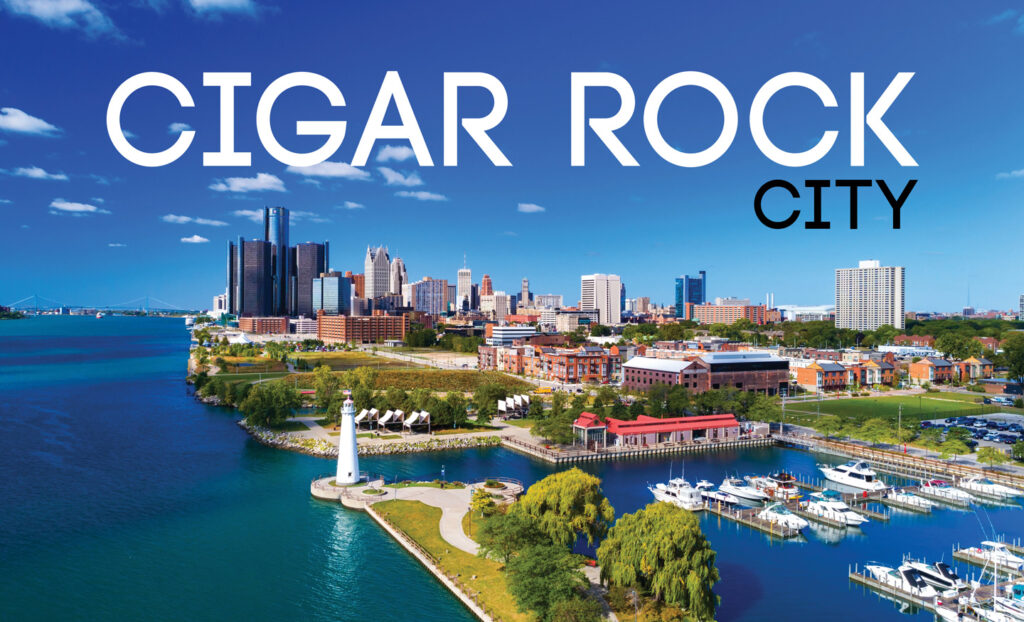To a kid growing up in Michigan in the 60s and 70s, Detroit was the show, a mecca of sports, entertainment and power in the state. While time has taken its toll on its standing, the city remains an alluring beacon, both a historical testament to American tenacity and a playland of good food, strong culture and a continually evolving cigar scene.
And add music to that bewitching mix – Motown was an integral part of the landscape, but the rock music that came from the oily underpinnings of the factory floor is among the most influential in history.
A chance to visit the Motor City, a place where I don’t need to Google Map everything, was a welcome opportunity. Finding friends and familiarity, the city and all of its magnificent flaws remains a desirable destination.
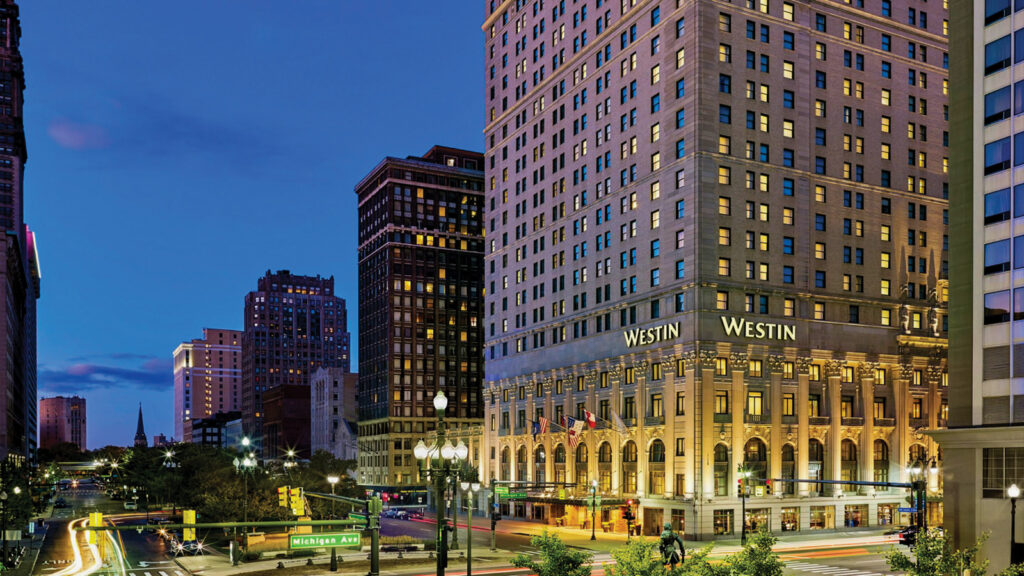
There are plenty of urban drives in the U.S. that provide a local’s look at a city and its region. U.S. Highway 1 on Florida’s east coast from Ft. Lauderdale to Miami, Sunset Boulevard from Pacific Palisades to downtown LA, Broadway in New York from the Financial District to Yonkers; all are well-suited as self-learning stretches of road.
But there’s nothing like a drive from stem to stern of Woodward Avenue in Detroit to give you the flavor of a city.
From manicured to mangled, the cruise takes in the earthy reality of the metro area. Start in the leafy, upscale Bloomfield Hills and make the 28-mile drive to the center of Detroit proper, the Coleman A. Young Municipal Center.
The journey down Woodward – which includes the country’s first mile of paved roadway, constructed in 1909 – delivers a cultural saga that ranges from tragic to beautiful. The monied palaces of the suburbs give way to the freshly crafted lofts of the city center, but also include the wreckage from decades of mismanagement, graft and other malfeasance.
The urban wreckage that lines the streets on some portions of the route, though, is part of the charm that is Detroit, a city with more history than promise. As a settler outpost in the 1700s, it emerged as one of the most important parts of the rise of the industrial U.S. with the founding of the automobile and the Ford Motor Company in 1903. It took 60 years for urban decay to create what we have today.
Yet the social spoiling is part of the charm of Detroit, which along with the car has brought us radio news programming, the three-color traffic light and Motown music.
Today, in addition to major league sports, amazing music, and a thriving literary and arts culture, the city is also teeming with cigar possibilities.
So, a sunny spring day starts at Smoky’s Cigar Lounge in Bloomfield Hills, an established outpost for 33 years. Set in a strip mall on Woodward, nestled close to a Starbucks, a Thai eatery, and an optometrist, among others, Smokey’s features a sizable humidor, private memberships and a smoking area for walk-ins near the front door.
Smokey’s recently expanded, almost doubling in size to accommodate a comprehensive overhaul including new furniture, a glassed-in private lounge and the addition of a $50,000 TrackMan 4 golf simulator.
“It’s already a hit,” says Paul Essa, co- owner of the store. “Golf is a big deal around here, we have a terrific market for it, and both our regulars and visitors are loving it.”
TrackMan includes simulations for over 300 courses around the world, from St Andrews Links in Scotland to Valderrama Golf Club in Spain and including 30 PGA tour stops.
Most humidors in Detroit are full, many of them overstocked with overflowing boxes, and Smokey’s adds a generous selection of in-house sticks produced “by whoever we can get to do it,” Paul says.
We drift south down Woodward, the avenue flanked by three country clubs, two private schools, tennis clubs, and the Frank Lloyd Wright Affleck House, a single-story architectural gem that used an open floor plan in the 40s, way before it was cool. Seasonal tours are available.
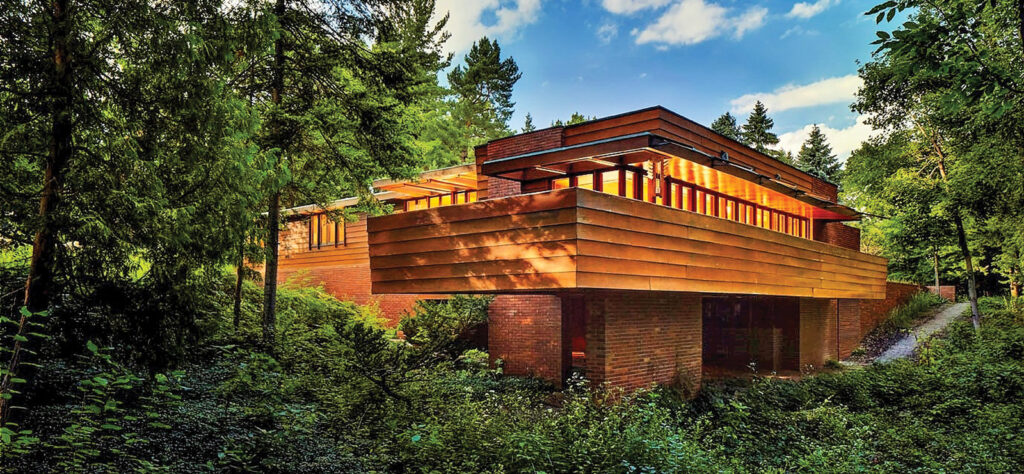
The drive also takes you past Cranbrook, the exclusive private boarding school, and Joe Muer Seafood, the latter the home of the simply named Jalapeño Cocktail, a steamy refreshment that includes Jalapeño nectar. Ask for extra spicy. Muer, an institution since 1929, has another location downtown, at the Renaissance Center on the Detroit River.
Further south, Churchill’s Bistro and Cigar Bar in Birmingham is just off Woodward in the middle of the town’s business district. Like Smokey’s, Churchill’s has boxes of cigars stacked to the ceiling in its cozy humidor. While the place offers a full menu, it remains focused on its cigar customers and an $800 annual membership has a waiting list.
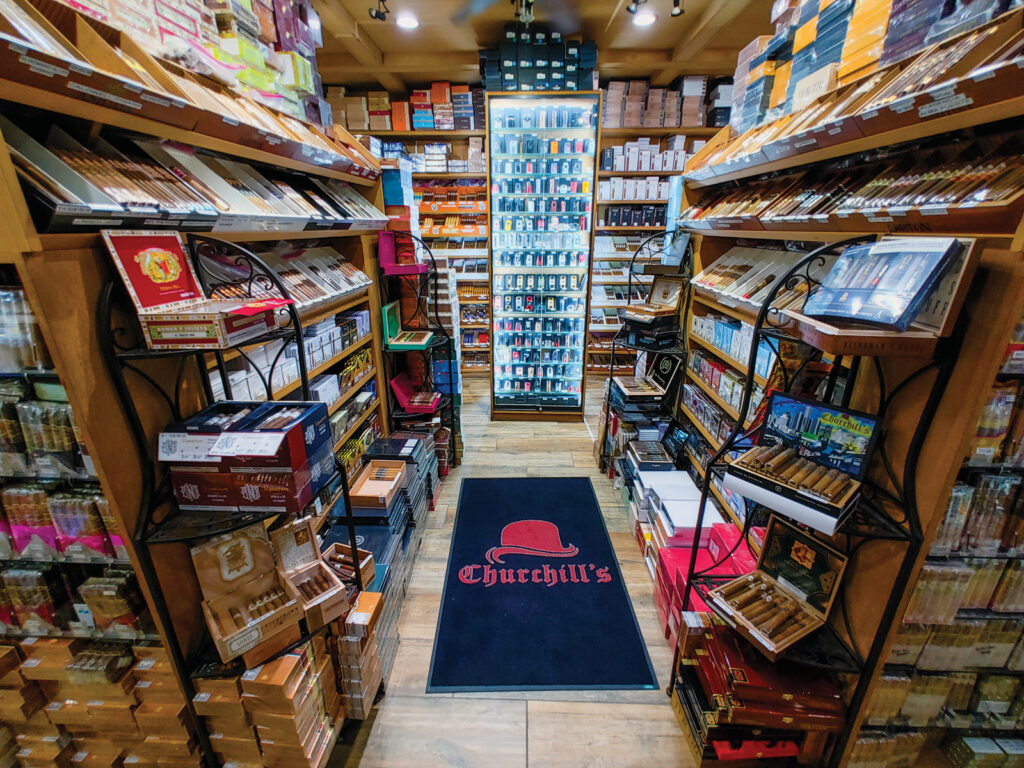
At lunch hour, a crowd arrives, some smokers, but “about 20% of our customers don’t smoke,” a bartender says. The outdoor patio in front is the only non-smoking section to Churchill’s, which has a West Bloomfield store and added a bistro location in Grosse Pointe Woods in 2016. Both have full menus with ambitious dishes, from dry-aged steaks to scallop and shrimp risotto, as well as full bars, down to wine lists with a generous selection of Italian reds.
Down the block about 300 feet from Churchill’s is the former office of Creem magazine, a 60s-70s music publication that was the counterculture answer to the stuffy establishment that was Rolling Stone. The city of Birmingham in 2015 honored the headquarters with a plaque, commemorating its 1973-1986 life there.
Creem called itself “America’s Only Rock and Roll Magazine,” and was fanatically irreverent while earning the respect of music fans and bands everywhere – except from the staid Rolling Stone honchos in San Francisco.
Historic sites continue – four miles from Churchill’s is the former site of the Machus Red Fox restaurant, where Teamster union boss Jimmy Hoffa was last seen on July 30, 1975. The Red Fox opened in 1965 and after Hoffa’s disappearance, the proprietor feared the infamy would impact traffic. But the dark inference of Hoffa’s involuntary vanishing act had the opposite effect, and the restaurant prospered for two more decades before closing in 1996. Today, Andiamo Italia West sits on the corner of Maple and Telegraph, dishing up Pollo Francese and Costolette di Maiale to solid reviews.
Back on Woodward, Barrels & Vines is a gas station in Royal Oak that sells $300 bottles of wine, offers a good bourbon selection, and a humidor. The pizza is not bad either. There are two locations of this gas station, both on Woodward, and both local favorites for the booze selection alone. The small but well-curated humidor gets its supply and recommendations from Churchill’s.
Deeper south is the fabled Eight Mile Road, the demarcation point for Detroit and the northern exurbs. Prince had Paisley Park, all feathers and purple tapestries, Eminem had Eight Mile, grimy gray and sometimes scary.
But the entry to Detroit proper also has a gate made of history: Baker’s Keyboard Lounge, opened in 1934 and claiming to be the world’s oldest jazz club, sits off the corner of Eight Mile and Livernois, a beaten down joint in a beaten down neighborhood. Legends have played this 150-capacity hole-in- the-wall: Earl Klugh, Yusef Lateef, Chet Baker, Pat Metheny, Pharoah Sanders, and Dizzy Gillespie all delivered from the tiny stage. Baker’s dishes up plates of fried chicken and mac and cheese, best enjoyed at lunch.
Not far past Eight Mile is E. McNichols Road, aka Six Mile Road, and a couple miles to the east off Woodward is the home of the original Buddy’s Pizza, which is widely credited for the wonder that is Detroit pizza.
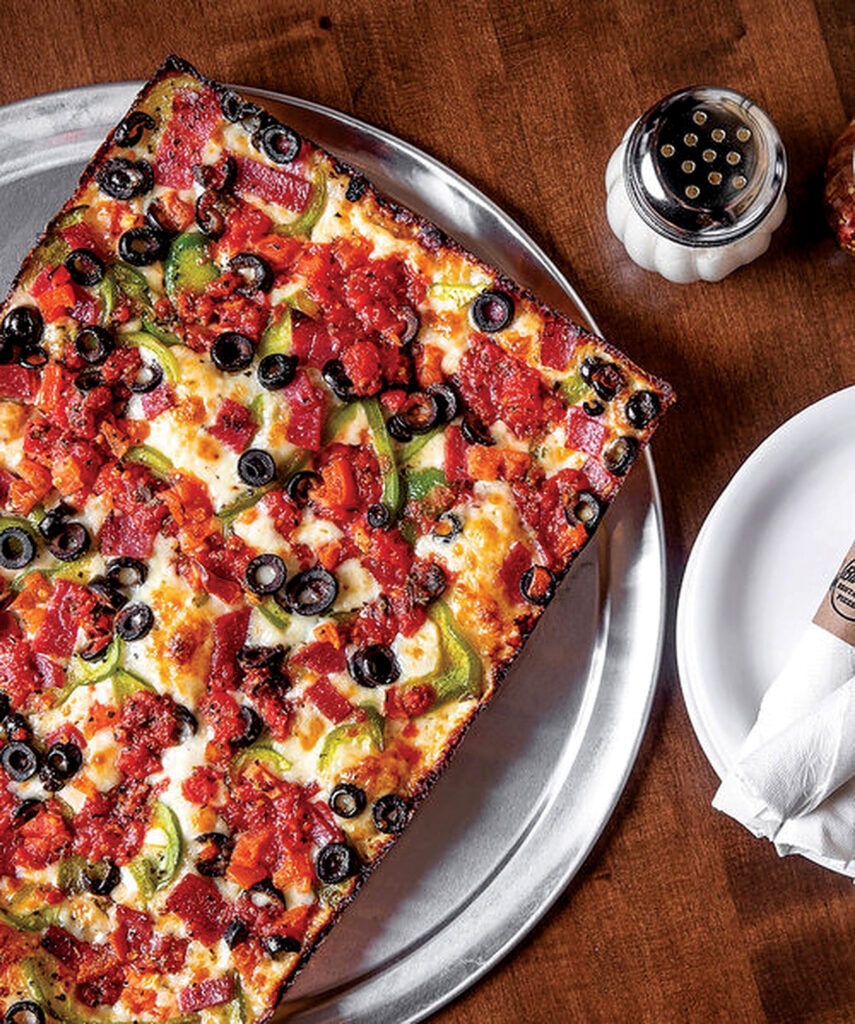
Buddy’s is now ubiquitous in the city, thanks to the success of this original, simple pizzeria model that began as Buddy’s Rendezvous Pizzeria in 1946. It’s the creation at the heart of Detroit pizza, the diligent, careful layering of the ingredients with a thick, crispy crust. The pizza is served on a steel pan – the way it was at the start when Buddy’s got the pans from nearby automotive plants. Eat it with a Vernors ginger ale, the creamy soda that is part of Detroit’s foodie heritage. It was developed in the late 1800s at a soda fountain in downtown Detroit and has continued as a favorite ever since.
Back to the main drag, Woodward winds past boarded storefronts and an easy turn into the Cass Corridor neighborhood, which includes Wayne State University. Motor City Brewing Works-Midtown, Jolly Pumpkin Pizzeria & Brewery, and the Bronx Bar are all part of the hustle of the seven-block area that has forever been a bohemian culture hub.
Motor City’s Corktown Stout is a solid bet, and across the street is Third Man Records, a record store, browsing room, pressing plant and an institution in some music circles as it is owned by Detroit native Jack White, who led the Detroit band the White Stripes. The Detroit Third Man is one of three in the world, the others being in Nashville and London. Pressing plant tours are available and recommended.
Some of the Cass buildings are old and some are new, and despite the ‘G’ word that marks the resistance toward making things better, the fixes are working. Gentrification is better than gutted.
We recall a Cass Corridor venue in the early 80s called the Freezer that featured national bands playing venues that used power that came through all- weather extension cords connected to the power poles on the street. It was taking back the streets in a fitting gesture – ripping off The Man – and that was how Detroit ran at the time.

Uralli Cigar Bar at The Detroit Club Photo credit: The Detroit Club
After record shopping, eating and honoring some history, a cigar is enjoyed at the Uralli Cigar Bar in the Detroit Club, which also houses a hotel and restaurant. Uralli opens most days at 3 p.m., and its humidor is a greatest hits affair. But the atmosphere is clubby and old school, and $20 non-member admission aside, it’s a fine place to take some time to ponder the day. A five- minute walk takes you to London Chop House and the LCH Cigar Lounge, an old school establishment that ticks all the boxes, from the low lights to the standout bar service, along with sink-into-yourself leather chairs. The LCH opens at 4:30 p.m. and offers full dining in the lounge. While the chop house opened in the 30s with a menu featuring the best in Great Lakes fish, the top of the menu today reflects its name; beef in several cuts.
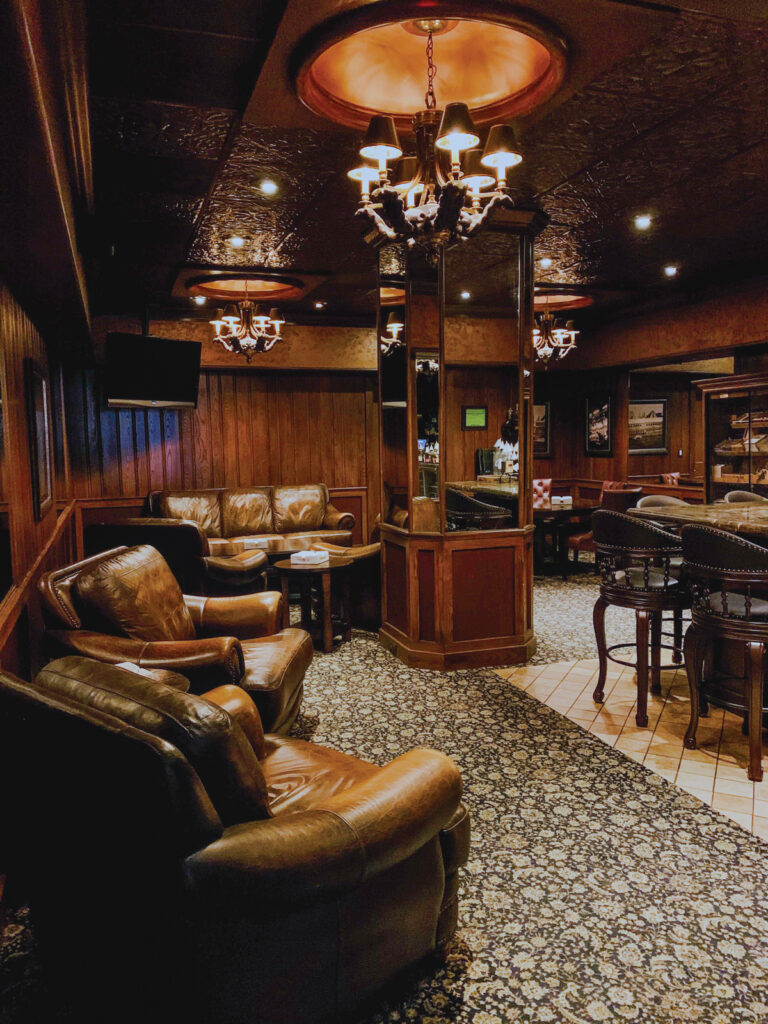
The London Chop House’s cigar bar. Photo credit: The London Chop House
Both lounges sit in one of the few crowded parts of the city and are close to the major entertainment venues, including Comerica Park and Ford Field, home of the MLB Tigers and NFL Lions, as well as Little Caesar’s Arena, a major concert venue, and the Fox Theater, a more intimate site. The action of the city centers in this small area, making it an easy evening.
The landmark hotel in the city is the 33-story Westin Book Cadillac, a $200 million revamp of a downtown classic that has housed America’s celebrities since it opened in 1924. Katharine Hepburn, the Beatles, Elvis, Ronald Reagan, John F. Kennedy, and Frank Sinatra have all conked at the Book Cadillac. In its more downtrodden days of the late 70s, old soul rockstars stayed there – Iggy Pop, David Bowie – sopping up the run-down ambience of what once was.
Marriott, owner of Westin, updated the place as part of the reopening in 2008, and while the new touches are in keeping with today, the exterior still reflects the 15th Century, Italian Renaissance style it came with.
Across the street sits another slice of Detroit cuisine – Lafayette Coney Island and American Coney Island. A Coney dog is a dog, mustard, beanless chili and diced onions on a steamed bun. It will reward you before it punishes you. Choose between the two – American has been there since 1917, Lafayette since 1924, both started by Greek immigrants that came to the city in the early 20th century.

Lafayette Coney Island’s coney dog with the standard fixings Photo credit: lafayettaconeyisland.org
The Coney joints of Detroit remain late- night favorites but the once-beloved Coney dog is being edged out of Detroit – what were once outposts for the fabled, decorated dog are now taco joints, nestled in younger-tilted neighborhoods. That’s not a terrible thing, as these fresh foodies are as adept at crafting tacos as their predecessors were at turning basic tube steaks into scarf-worthy deliciousness. We like pig lips and nitrites, and for decades, so did Detroiters. Like anything, it changes. Now it’s fatty chorizo and cheesy tortillas.
Graced with fine spring weather – yes, we stated as much before but in Michigan, this is so rare it’s worth mentioning twice – we needed a place to smoke the Butera Royal Vintage Bravo we’d bought at Smokey’s. We leave Woodward behind and just outside the bustle of downtown, a couple miles up Jefferson, sits Belle Isle, a state park set on an islet just over the MacArthur Bridge. The island offers views of downtown Detroit on one side, the less interesting shoreline of Windsor, Ontario on the other. There’s plenty of room on a weekday afternoon and you can grab some bench and smoke without bothering anyone.
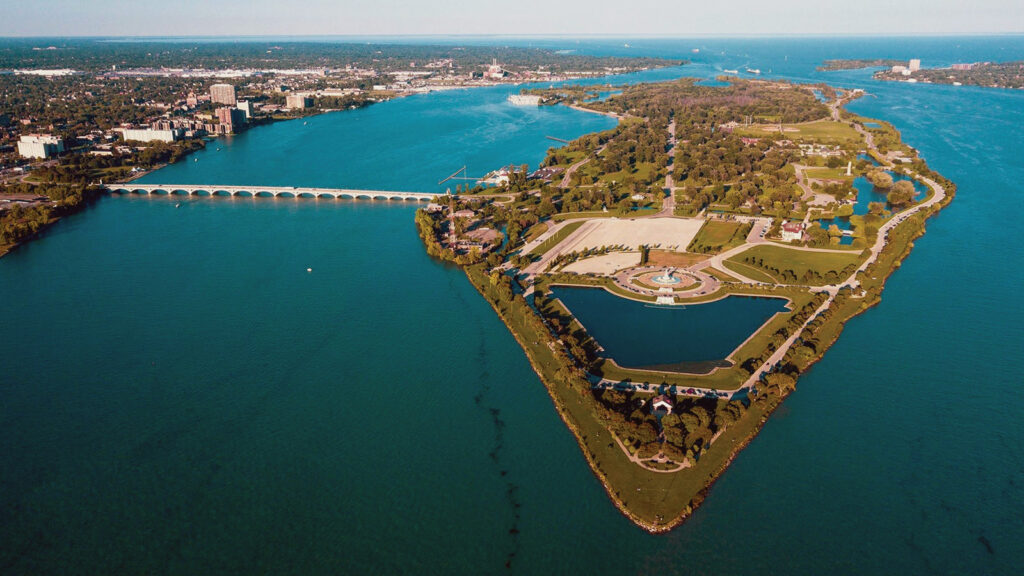
Belle Isle sits in the Detroit river on the U.S.-Canada border. Photo credit: nps.org
The nearly 1,000 acres of park at the mouth of the Detroit River give cover to terrestrial birds including eagles and cranes, while visitors take advantage of the golf course, yacht dock and lily pond, all while following twisting paths that wind through the grassy park.
Carl is a retired customs agent at the border of Canada and the U.S., and from where we stand at the shore, as he languidly casts a fishing line, we can see the Ambassador Bridge that connects the countries.
“Musky, walleye, perch, bass – this feeds right off [Lake] St. Clair so we get anything it has pretty much.” Carl says. As we talk, a beaver wanders the shore 50 feet from us, poking around before settling under some brush. Freighters, Coast Guard cruisers and the occasional yacht sail by as we talk.
The Dossin Great Lakes Museum on Belle Isle explains the city’s maritime past. It includes the restored Gothic Room, the smoking lounge, from the S.S. City of Detroit III, a steamer launched in 1911.
Weekdays are the best time to visit Belle Isle, as thousands hit the park on summer weekends and summer holidays creating a busy “Summer Rental” scenario. There’s also the solace of winter; you’ll find yourself alone, surrounded by skeleton trees as the sun rises, seeing the river and skyline in a light that is different than any other season.
The day ends with a late lunch on the front patio at Churchill’s in Grosse Pointe Woods, digging into a satisfying Greek salad with blackened salmon.
Heading north at rush hour, it’s clear there is no rush hour in Detroit. Yes, traffic will back up at some times but there’s no denying that the flight of population from both Detroit and Michigan has made the streets and highways easier to navigate. It’s striking especially if you are used to dealing with urban traffic in a bustling city, and the ease is welcome.
The northern reaches of Detroit are thick with development, including the rows of auto suppliers and auto industry-connected tooling shops, parts
distributors, and tech developers. The stream of them along suburban avenues is just like the oil industry suppliers, rig repair, digging services etc., in West Texas, where shops and businesses exist only to serve and accommodate the region’s economic engine. Suburban Detroit has prospered despite the poor performance of the American auto industry, which has for decades been soundly thumped by automakers from Asia and Germany.
That prosperity has helped deliver a bevy of cigar lounges. The majority of them feature the full lounge experience, with full bars, massive TVs, and large humidors. Several also feature full food menus.
The Godfather Cigar & Martini Lounge has two locations in north Detroit, both with a bar, outside patio and private upstairs lounge for members. The lounge in Rochester Hills is in the middle of a shopping center with nary a complaint from neighbors or the patrons of the next door grocery store.
Its humidor is, like the others we visited in the city, well-stocked, even overflowing with product, from the greatest hits to smaller boutique brands.
A couple of other lounge proprietors with neighbors told us they encountered few problems despite their location, which speaks to the easy-going relationship that cigars have with their communities – very encouraging especially considering Michigan has had a stringent smoking ban since 2010. Cigar lounge licenses are limited but transferable and run around $100,000.
Travelers often find a place that suits them, be it a restaurant, a bar, or a cigar lounge.
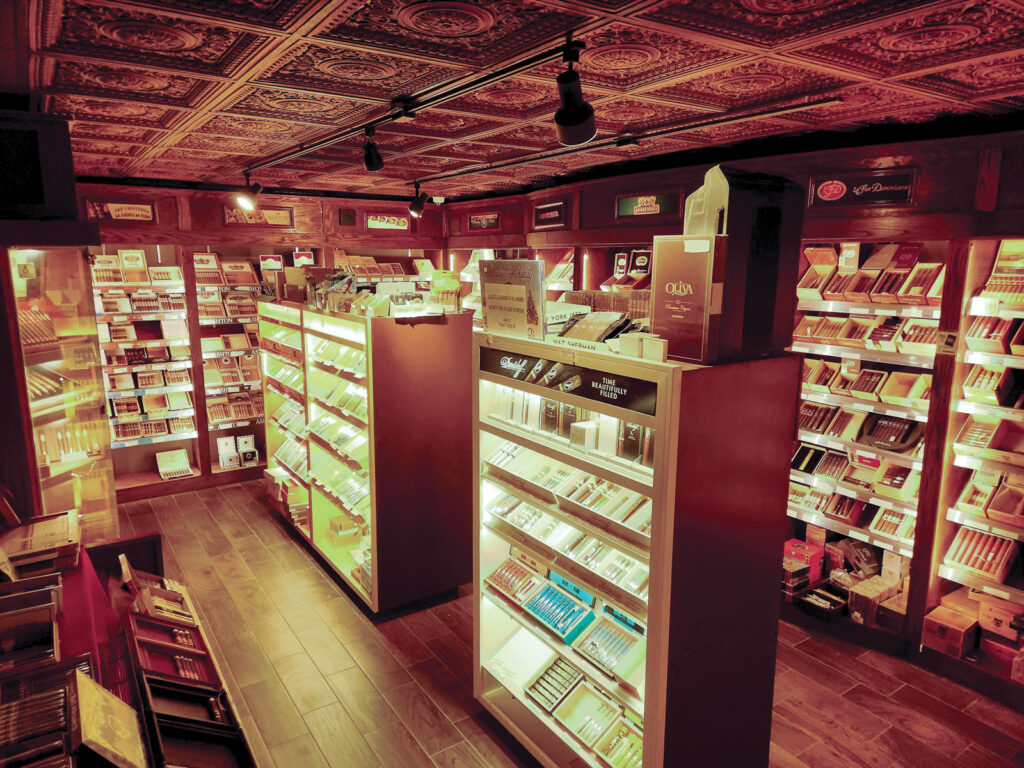
The humidor at Ambassador Cigars & Spirits in Troy Photo credit: Ambassador Cigar & Spirits
In our case, Ambassador Cigars and Spirits became our home away from home during this trip. It’s a dark corner bar/eatery that features cigars, with a large humidor – again, boxes stacked to the ceiling – and the usual lounge leather chairs, tables, and some standard roomy booths.
Our first visit, we pulled a Romeo y Julieta 1875 Nicaragua and a glass of Daou Cabernet Sauvignon Paso Robles and sat at the bar. As is the tradition in Michigan, barstool conversation ensued, candid and free-flowing.
Situated in a spot that pulls cigar fans from several surrounding suburbs, the Ambassador secured a strategic location when it opened in 2016, explains Sean Coughlin, who is now partner in the Ambassador.
“I was working in the beer and wine industry and one of the accounts was a cigar lounge and when they needed someone, I took it,” Coughlin says.
He jumped at the opportunity to be more involved in the Ambassador, where about 90% of its clientele are regulars.
“When we put the humidor together, I wanted to make sure that since all the cigar makers are putting this money into art, especially with the boxes, I wanted the humidor to be well-lit to show the boxes,” he says.
The place is cozy, and one can imagine coming into its warmth while a Michigan snowstorm blitzes the landscape.
“Yeah, in Michigan, we know that the good weather means the stores do better and the cold weather means the lounges do better,” Coughlin says.
It was such a good experience, we brought friends a couple days later.
The Ambassador had been suggested to us a few weeks earlier by Larry Fratangelo, an Ambassador regular and a Detroit native who has played and toured with everyone from Parliament- Funkadelic to Aretha Franklin. He’s currently the percussionist with Kid Rock’s touring band and has just wrapped rehearsals for a series of tour dates.
Fratangelo lights up a Cohiba, a favorite of his along with the Fuente Fuente Opus X, and slides into a booth.
“I started with the small stuff, like in Funkadelic I smoked those cigars with the wooden tip,” he says. The infamous Hav-A-Tampas, as he recalls, and indeed, a 70s promo photo for Parliament-Funkadelic shows Fratangelo holding the old-school panetela.
His first premium cigar was more recent, although his memory is hazy.
“It may have been with Chad [Smith] from the [Red Hot] Chili Peppers, as he likes cigars, too,” says Fratangelo, who Smith credits with helping him learn to play the funky rhythms that made the Peppers platinum. Smith grew up in Bloomfield Hills.
Fratangelo knew he had a good gig with Rock when he cruised past the gates of the Augusta National Golf Club in Georgia. Kid Rock is a connected golfer and when he received an invitation to play the fabled home of the Masters, he asked Fratangelo to join him.
“We had a show in Charlotte and a show in Atlanta and the golf in the middle,” Fratangelo says. It was four or five members of the band, some of the security team and several members.
“We showed up in the early afternoon and had a walk-through of the clubhouse, with all the clubs from the winners and the trophies and it was just golf history right there,” Fratangelo says. The course was all he expected with a heavy dose of expertise.
“I had a putt lined up and I said, ‘I’m going at it like this.’ And the caddy says, ‘No, you want to do it over here.’ He knows the course, so I line it up as he says and of course, he’s right.”
Joining us at the Ambassador is keyboardist Jimmie Bones, Fratangelo’s Kid Rock bandmate and a long-time fixture in Detroit’s music scene. Bones is Detroit born-and-bred with roots that date back to when the city was a bustling megalopolis with two million residents and we talk old Detroit stuff – the old Tiger Stadium, the old train station, the old…well, everything in Detroit is old, in a good way.
Bones comes to the Ambassador noting he is primarily a pipe smoker, dabbling on occasion in cigars. He has usual stops on the road for his pipe needs – he singles out Chicago’s Iwan Ries & Co. and Milan Tobacconists in Roanoke, Virginia, as obligatory visits when he plays those areas.
But today he fires up a Diamond Crown Robusto No. 4 and a convert is made; he smokes enthusiastically and notes the flavor.
“I bought my first premium cigar from a bathroom attendant at the House of Blues in New Orleans,” Bones says. He was playing with Robert Bradley’s Blackwater Surprise in the 90s. “The guy everyone calls ‘doctor,’ and has towels, cologne and a selection of cigars. I bought an Arturo Fuente.”
Also joining us is Garret Bielaniec, who has played guitar on Alice Cooper’s last two records, including 2021’s charting Detroit Stories. With some of his Cooper session money, he bought some audio gear but his home workshop also includes several cigar box guitars, which “usually sound kinda crappy but they look great.”
“Cigar box guitars were made by old blues guys who couldn’t afford a guitar,” Bielaniec says, smoking a Nica Rustica Adobe Toro. “They cost less than $100 to make now, so they were really affordable back then.”
Garret’s a devoted cigar smoker, quitting cigarettes and realizing that cigars taste better and are more fun.
“I had my first premium cigar when I was still in high school,” he says, noting that it was decidedly uncool. “Back then, girls hated the smell of cigars, they were chick repellants. Today, though, it’s different. Cigars smell like money.”
A tidy bow on a Detroit visit comes with the trip to Detroit Metropolitan Airport for the flight home. A quick 20 minutes west of the airport exit is a German restaurant that is among the best in the U.S. Metzger’s German Restaurant opened in downtown Ann Arbor in 1928, by first generation German immigrants. It moved to the outskirts in 2000 without changing the menu or the fine service. The bratwurst, the Ziguener steak, the Sauerbraten and the stuffed cabbage are among the best this side of Milwaukee.
Hopefully, you’ve left time for a final smoke, and La Casa Cigar is on the way back to the airport. It’s a spacious lounge with a full bar and fuller humidor with another location in downtown Detroit. The signature of the place though is the house cigar line, called 20 Minutes in Detroit, that includes several named after various Motor City locations, including the 6 x 45 Cadillac Square, and the 6 x 54 Eight Mile. While it’s Detroit based, La Casa also has a lounge in Las Vegas with its own 20 Minutes in Las Vegas line.
The view from the plane as we fly out takes us back over the city then southeast, the brown colors of the factories fusing with the emerging, brilliant green of the season. By the time the northern shore of Lake Erie is below, our days in the city are forming into one more memorable experience. Like the city and its industrial-era roots, Detroit’s cigar scene is a throwback to an era of tradition. Thank you, Detroit, for the treacherous, flavorful mess that you are.

